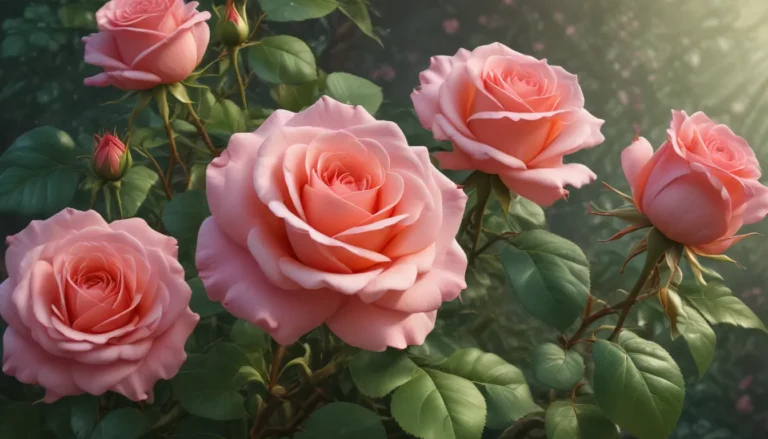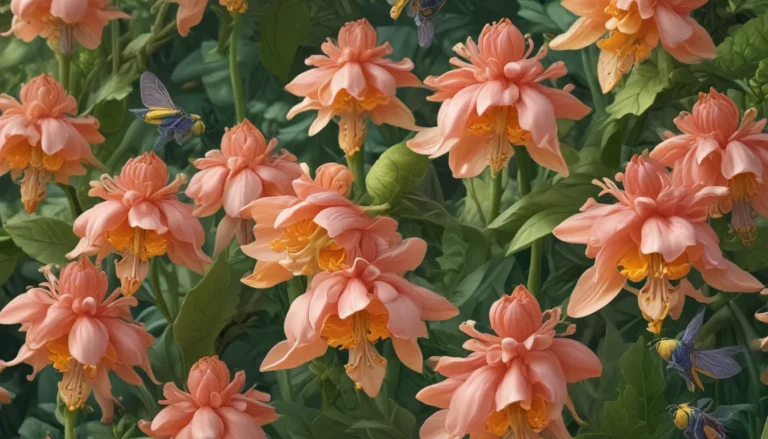The pictures we use in our articles might not show exactly what the words say. We choose these pictures to make you interested in reading more. The pictures work together with the words but don’t take their place. The words still tell you the important facts.
Agapanthus, also known as the “Lily of the Nile,” is a magnificent flowering plant that has captured the hearts of gardeners and plant enthusiasts worldwide. With its breathtaking blue or white blooms and graceful architectural structure, Agapanthus is a popular choice for gardens, borders, and containers. But beyond its beauty lies a treasure trove of intriguing facts that make this plant truly extraordinary. Let's embark on a journey to discover the wonders of Agapanthus and unravel its captivating characteristics, historical significance, and horticultural value.
The Enchanting Origins of Agapanthus
Native to Southern Africa, Agapanthus has its roots firmly planted in the diverse landscapes of countries like South Africa, Lesotho, and Swaziland. This resilient plant has found its place in various regions, captivating all who encounter its striking presence.
The Meaning Behind the Name
Derived from the Greek words “agape,” meaning love, and “anthos,” meaning flower, the name "Agapanthus" perfectly encapsulates the plant's captivating blossoms that symbolize love and affection. It is a fitting tribute to its enchanting allure.
A Member of the Amaryllidaceae Family
Belonging to the Amaryllidaceae family, which boasts other popular plants like Amaryllis and Narcissus, Agapanthus stands out with its vibrant flowers and unique characteristics. This family is renowned for its floral splendor and diverse botanical wonders.
A Mosaic of Colors
While blue is the most common color of Agapanthus flowers, they also bloom in shades of white, purple, and captivating bi-colored varieties. This versatile palette adds a touch of diversity and charm to gardens and floral displays.
A Symbol of Love and Affection
As a traditional symbol of love, Agapanthus holds a special place in romantic occasions and garden settings. Its graceful blooms evoke feelings of admiration and appreciation, spreading love throughout the garden.
A Haven for Pollinators
The vibrant flowers of Agapanthus attract a plethora of pollinators, including butterflies, bees, and birds. Their nectar-rich blooms provide a valuable food source for these beneficial insects, enhancing the ecological balance of any garden.
Resilient and Beautiful
Known for its hardiness, Agapanthus thrives in various climates, braving drought and frost with ease. Its ability to adapt makes it a resilient choice for gardeners seeking a plant that can withstand different environmental conditions.
Endless Blooms of Beauty
With proper care, Agapanthus boasts long blooming periods that can stretch from late spring to early fall, adorning the garden with a continuous display of stunning flowers. Its enduring beauty is a sight to behold.
Versatility in Gardening
For those with limited garden space, Agapanthus shines as it can be successfully grown in containers. This versatility allows gardeners to enjoy its beauty on balconies, patios, or any small space in need of floral charm.
Nature’s Deer-Resistant Wonder
A boon for gardeners in deer-prone areas, Agapanthus boasts deer resistance, making it a practical choice for those looking to protect their gardens from these graceful yet hungry creatures.
Healing Powers of Traditional Medicine
In certain African cultures, Agapanthus has been revered for its medicinal properties, used to treat various ailments such as coughs, colds, and stomach disorders. Its healing potential adds another layer of cultural significance to this remarkable plant.
A Haven for Feathered Friends
The seed heads of Agapanthus attract a variety of bird species, providing them with a nutritious food source. By welcoming these feathered visitors, Agapanthus enhances the biodiversity of gardens and creates a harmonious ecosystem.
Sharing the Beauty Through Propagation
Agapanthus can be easily propagated through division, making it a straightforward plant to share with fellow gardening enthusiasts. Its simplicity in propagation allows for the spread of its beauty to new gardens and landscapes.
Elegant Additions to Floral Displays
With their long, sturdy stems and striking blooms, Agapanthus flowers are a popular choice for cut flower arrangements and floral displays. Their elegance and charm add a touch of sophistication to any setting.
These captivating facts about Agapanthus shed light on the beauty, resilience, and versatility of this remarkable plant. Whether you are a seasoned gardener or an admirer of nature's wonders, incorporating Agapanthus into your surroundings will undoubtedly bring joy and admiration. Each encounter with this enchanting plant is an opportunity to marvel at its extraordinary features and appreciate the magic it brings to the garden.
Embracing the Wonders of Agapanthus
In conclusion, Agapanthus stands as a beacon of beauty and versatility in the world of gardening. Its unique characteristics, from diverse flower colors to its ability to thrive in different climates, make it a standout choice for plant enthusiasts. By delving into the 14 fascinating facts about Agapanthus, you gain a deeper appreciation for this exceptional plant and its contribution to the natural world. Share these insights with friends and family to spread the magic of Agapanthus and inspire a new generation of plant lovers.
Frequently Asked Questions About Agapanthus
- Are Agapanthus plants easy to grow? Yes, Agapanthus plants are generally easy to grow and adapt to various climate conditions.
- Can Agapanthus be grown in containers? Absolutely! Agapanthus thrives in containers, offering a versatile option for limited garden spaces.
- How often should Agapanthus be watered? Regular watering, particularly during hot and dry periods, with approximately once a week recommended.
- Do Agapanthus plants require full sun? While they prefer full sun, Agapanthus can tolerate partial shade, though flowering may be reduced in shady areas.
- How tall can Agapanthus plants grow? Depending on the species and cultivar, Agapanthus can reach heights ranging from 1 to 4 feet.
- When is the best time to divide Agapanthus? Dividing Agapanthus is best done in early spring or late summer when the plant is dormant.
- Can Agapanthus tolerate frost? Most Agapanthus species are frost-tolerant, making them suitable for colder climates.
- Do Agapanthus attract pollinators? Yes, Agapanthus flowers attract bees, butterflies, and other pollinators, enhancing garden ecosystems.
- Are Agapanthus toxic to pets? Yes, Agapanthus plants are mildly toxic to pets if ingested and should be kept out of reach.
- How long do Agapanthus flowers last? Agapanthus flowers can last for several weeks, providing a prolonged display of beauty.
- Can Agapanthus be used as cut flowers? Agapanthus flowers are exquisite additions to cut flower arrangements, bringing elegance indoors.
- Do Agapanthus require fertilizer? While relatively low-maintenance, Agapanthus benefit from a balanced, slow-release fertilizer for healthy growth.
- How do Agapanthus propagate? Agapanthus can be propagated through division of established clumps or planting offsets from mature plants.
- Can Agapanthus thrive in coastal areas? Yes, Agapanthus flourishes in coastal regions, adapting well to salty air and sandy soil conditions.
Our commitment to providing accurate, engaging content ensures that each fact shared about Agapanthus is a testament to its beauty and significance. Join us in exploring the wonders of this enchanting plant and enrich your knowledge of nature's marvels. Trust in our dedication to delivering quality information as you discover the magic of Agapanthus and its enduring appeal in gardens around the world.






